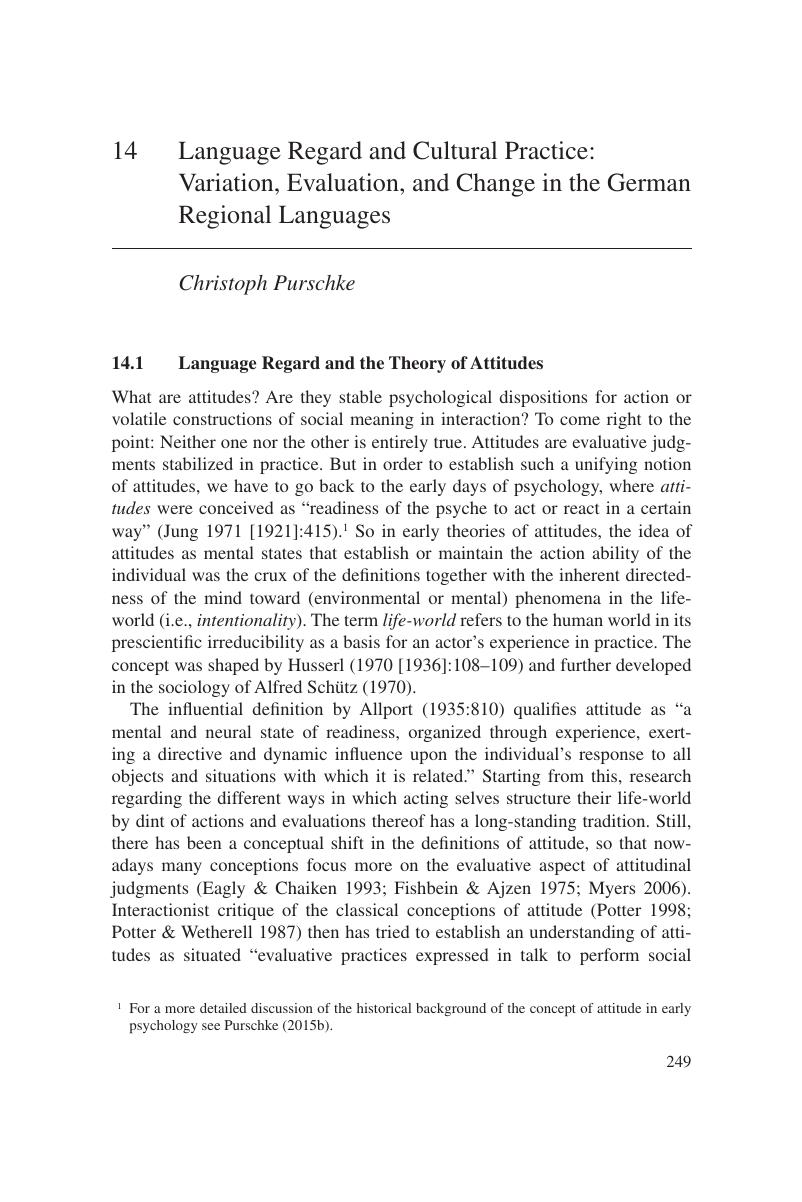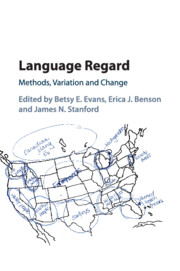Book contents
- Language Regard
- Language Regard
- Copyright page
- Dedication
- Contents
- Figures
- Tables
- Notes on Contributors
- Preface
- Acknowledgments
- Introduction
- Part I Language Regard: Varied Methods
- Part II Language Regard and Language Variation
- Part III Language Regard and Language Change
- 13 Cracking the Code: Wedgies and Lexical Respectability
- 14 Language Regard and Cultural Practice: Variation, Evaluation, and Change in the German Regional Languages
- 15 Tabula Rasa New-Dialect Formation: On the Occasional Irrelevance of Language Regard
- 16 Sharedness and Variability in Language Regard among Young Danes: Focus on Gender
- Index
- References
14 - Language Regard and Cultural Practice: Variation, Evaluation, and Change in the German Regional Languages
from Part III - Language Regard and Language Change
Published online by Cambridge University Press: 12 January 2018
- Language Regard
- Language Regard
- Copyright page
- Dedication
- Contents
- Figures
- Tables
- Notes on Contributors
- Preface
- Acknowledgments
- Introduction
- Part I Language Regard: Varied Methods
- Part II Language Regard and Language Variation
- Part III Language Regard and Language Change
- 13 Cracking the Code: Wedgies and Lexical Respectability
- 14 Language Regard and Cultural Practice: Variation, Evaluation, and Change in the German Regional Languages
- 15 Tabula Rasa New-Dialect Formation: On the Occasional Irrelevance of Language Regard
- 16 Sharedness and Variability in Language Regard among Young Danes: Focus on Gender
- Index
- References
Summary

- Type
- Chapter
- Information
- Language RegardMethods, Variation and Change, pp. 249 - 265Publisher: Cambridge University PressPrint publication year: 2018
References
- 2
- Cited by



